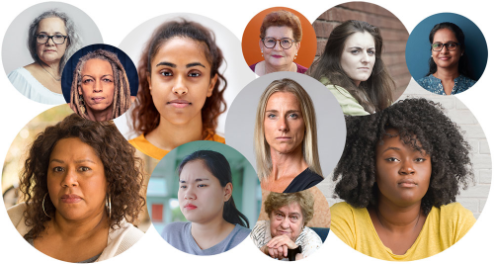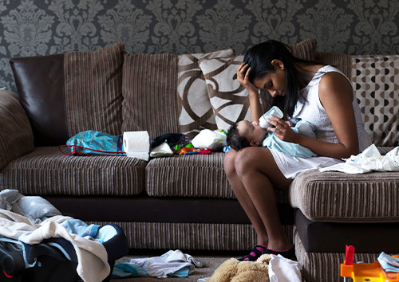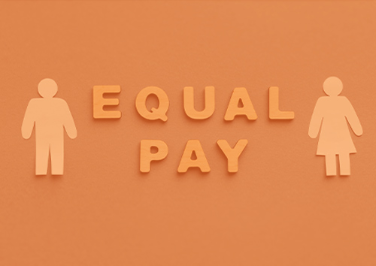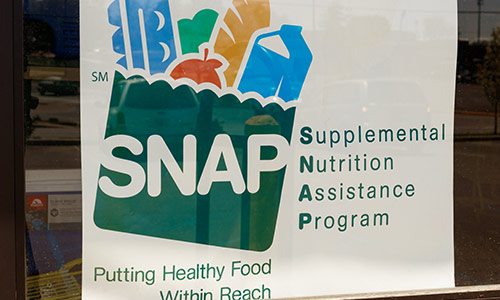Why Women Are Facing Hunger at a Disproportionate Rate

The Equal Rights Amendment in 1972 established legal equality based on sex. However, to this day, inequality based on sex permeates the societal and hierarchical structure of America. Due to the lasting historic imprint left by the lack of women's rights, deep-routed gender norms, and human-made conflict, women experience hunger at a disproportionate rate worldwide.
Globally, women are more likely to live below the poverty line compared to men. There are around 349 million people experiencing food insecurity around the world, and 60% of those individuals are female. This issue plagues women living in America as well. Many women in the U.S. do not have access to sufficient food to feed themselves and their families.
Women living alone or female single parents are at a higher risk than married women for food insecurity. Frequently, they are left vulnerable because of a lack of financial support and the urge to prioritize their children and others' needs before themselves.
Before the pandemic, around 13.7 million U.S. households had inadequate access to food. The households that suffered the worst were female single-parent homes. Families with children with a single mother had a food insecurity rate of 24.3% in 2021, while 16.2%% of single fathers dealt with food insecurity.
It's no secret that, globally, women have access to fewer resources and face more economic barriers than their male counterparts. Many people are unaware of why the gender-related hunger disparity exists in one of the world's wealthiest countries.
The Lasting Impacts of COVID-19
The pandemic has negatively impacted Americans mentally, physically, and financially, but it has been worse for certain groups of people. Generally, women are affected more dramatically by COVID-19 economically because of the existing gender inequalities present in the U.S. However, women of color bear the brunt of the economic devastation, with record amounts of loss of income, jobs, and food security.
Four weeks after the World Health Organization (WHO) declared COVID-19 a global pandemic in mid-March 2020, Americans had already lost 20.5 million jobs. Women were laid off more widely than men, with women making up 55% of the jobs lost.
Some of the reasons behind this mass job loss for women were that the pandemic hit the industry sectors dominated by women. The significantly impacted sectors were leisure and hospitality and education and health services, which account for 56.5% of total job losses for women since February.
December was a month of extreme job loss for women, with 156,000 women becoming unemployed, while 16,000 men gained work, according to the National Women's Law Center (NWLC).
The racial disparities in opportunities have created an economic structure where Hispanic and Black women face unemployment and experience a loss of income at a far greater rate than white women. During the height of the pandemic, a net of 2.4 million women left the labor force from 2020 to 2021, including 582,000 Hispanic women and 511,000 Black women. Post-COVID, Black women are still struggling to return to the workforce at a higher rate, in part due to feeling unsafe, unheard, and undervalued in the workforce. According to a report from Hue, BIPOC women are 2x more likely to not feel emotionally or mentally safe at work compared to their white counterparts.

Several global reports propose solutions for dealing with the worldwide increase of food insecurity due to COVID-19. But, out of the 73 international reports, 46% of them did not mention women or girls at all. None of these reports consistently analyzed or brought attention to the gendered effects of the pandemic and food insecurity.
The impact of women's job loss goes beyond food insecurity alone. It also affects women's ability to take care of their children and eventually return to the workforce. Amid school closings and limited child care options throughout the pandemic, many mothers faced a difficult predicament. Now, post-COVID, more and more women are returning to the workforce. According to The Center for American Progress, an estimated 993,000 more mothers were working in December 2022 than in December 2021.
Single income households where the mother maintains the primary income are affected significantly more when it comes to job loss compared to multiple income households. For single mothers, losing a job directly impacts their ability to afford child care, pay their bills, put food on the table, and so much more.
"The loss of relevant skills during disruptions in employment can also make it difficult for people to return to work," Research Associate in Women's Economic Security at the Center for American Progress, Robin Bleiweis, said. "And, for millions of women with caregiving responsibilities, the lack of affordable child care, paid family and medical leave, and flexible workplace policies can make returning to work even more challenging."

The American Rescue Plan (ARP) passed in March 2021, which focuses on providing aid to women for childcare needs because that has been one of the main components taking women out of the workforce.
"The longer we wait to act, the harder it will be to bring those millions of women back into the workforce," Vice President of the United States, Kamala Harris, said.
The impacts of COVID-19 on women in the workforce have been detrimental, but there is a greater focus on women's need for childcare, equal pay, and racial equality in the job market. COVID-19 has caused many Americans to experience food insecurity for the first time. However, women still encounter hunger at a higher rate, which points to the correlation between food insecurity and gender inequality.
Over 13.5 million women experienced job loss due to the impact of COVID, which is 18% of the entire female population in the United States. Post-COVID, many women have been able to regain their footing in the workforce. In fact, women in the workforce in 2023 is nearly back to pre-pandemic level of 77%.
Gender-Based Violence
Women in the U.S. face two major public health issues - food insecurity and violence. Violence against women and girls is one of the most extensive human rights violations in the world. There are no limitations to gender-based violence. It affects every race, religion, state, or country; it extends worldwide and affects women's lives everywhere.
The commonality of abuse towards women is staggering. In the United States, 1 in 4 women experience physical or sexual violence. Additionally, 1 in 6 women in America have been sexually abused, by a partner or someone else. This data is limited due to the lack of reporting. Most sexual and intimate partner violence is perpetrated by men against women.
A study from 2019 researched the correlation between gender-based violence and food insecurity and found that victims of sexual, physical, or psychological violence were more likely to report very low food security.
These acts of violence cause devastation to the survivors and impact their quality of life, according to a 2015 study from Cambridge University. The impact is measurable through the social and economic costs.
During the pandemic, the risk of domestic violence and sexual assault increased against women, due to the multiple stay-at-home orders keeping women in their homes with their abusers. President of the United States, Joe Biden, recognizes this issue and has called it a "shadow pandemic" due to many women and girls being unable to escape due to the economic insecurity created by the pandemic.
In the American Rescue Plan, President Biden called for $800 million in additional funding for vital federal programs that protect survivors of gender-based violence.
These losses of wages and social networks leave women and girls at a greater risk of experiencing food insecurity.
During periods of widespread food insecurity, like during COVID, 42 million people falling into food insecurity because of COVID-19, tensions within households begin to rise. According to the Humanitarian Practice Network, these tensions can result in domestic violence, which increases as food scarcity increases. The Humanitarian Practice Network is an independent forum for policymakers, practitioners, and others working in the humanitarian sector. They found that the number of incidents decreases as the assistance begins to fill the food gap.
Federal programs and policies set forth by the American Rescue Plan (ARP), Women, Infants, and Children Program (WIC), and the Supplemental Nutrition Program (SNAP) are critical agencies supporting women experiencing gender-based violence and food insecurity in America.
Gender Discrimination in Pay and Benefits

In 1963, the Equal Pay Act was signed into law, and the Equal Rights Amendment followed in 1972. To this day, all 50 states have not ratified the Equal Rights Amendment. Both pieces of legislation were supposed to provide gender equality and prohibit discrimination on the basis of sex. However, after all this time, inequality still exists through the gender pay gap and historical gender norms for women that still permeate the societal structure of the U.S.
In 2023, nearly 60 years later, the gender pay gap stands at 82 cents for women of all races, for every $1 earned by men of all races. These numbers reflect the median annual income of women working full-time, year-round compared to men working the same hours. At the current rate of progress, the pay gap will not close until 2093.
Research shows that when women's social and economic status is elevated individually or within their household, it directly impacts their food security and nutrition. This study displayed how the link to women's control or access to additional household income directly affects how much money they will spend on food. The data showed that frequently when a woman makes more money, they will spend more on food than men do.
This study by the Food and Agriculture Organization of the United Nations shows that these ingrained patterns are linked to food insecurity. Women do not make a higher average salary in any state across the U.S., reinforcing the fact that the pay gap has not been closed.
Some of the factors that widen the pay gap throughout the U.S. are; a lack of equal access to funding for female-owned businesses, corporate cultures tending to promote men or prioritizing men for raises, unequal hiring practices, the small number of women-owned businesses in each state, a lack of local legislation protecting women from discriminatory corporate practices, and many other societal influences.
The map below shows that the pay gap affects every state but is worse in certain parts of the country. The state with the smallest pay gap is Vermont (10%), with the most significant being in Wyoming (35%).
The Gender Pay Gap Across the U.S, in 2021
Click a state on the map below to view more information on the gender pay gap.
Each state is ranked based on its pay gap percentage difference between women’s and men’s annual income when working full time
There are two different ways to measure the gender pay gap. The first is the 'uncontrolled' gender pay gap, which examines the median salary for all men and women regardless of job type or position, which amounts to an eight-cent difference between men and women. The 'controlled' pay gap compares a man and woman working in the same job in the same position, which is a two-cent difference.
On average, men's median salary is 11% higher than the median wage for women in the U.S. regardless of position. Although an improvement from the past, it is still far from being equal. When comparing men and women with the same professional skills and jobs, women still earn $0.98 for every dollar that a man makes. This 2% decrease in pay adds up to thousands lost over several years, with no attributable reason why the pay gap still exists.
"Put simply, the gender pay gap is a reflection of the fact that women tend to have lower earnings than men do – therefore, the gender pay gap impacts nearly everyone," Bleiweis said. "Women of color, who experience much wider wage gaps, endure the negative impacts most acutely. Pay discrimination is prevalent and stems from biases rooted in sexism and racism, and persists across multiple industries."
One study found that, based on the National Health Interview Survey and National Health and Nutrition Examination Survey, more than 1 in 3 individuals who identify as Black women experienced food insecurity in the last year, slightly more than 1 in 4 white women who experienced food insecurity in the past year.
The 2% decrease in pay has caused many women to experience more outstanding student debt after college. The amount of women in higher education has surpassed the number of men attending university. Consequently, women have a more difficult time paying back their student loans after college due to the gender pay gap. Lost earning throughout women's lifetimes not only plays into their daily lives but contributes to less money in their social security and pensions over time. Women's overall retirement income is 30% less than men typically have when they retire.
Women face inequality at every level of their lives, especially once they enter the workforce. American women are twice as likely to work in low-wage, part-time jobs with few to no benefits. Many women, particularly single mothers, lack adequate health insurance and primary medical care. The lack of medical support puts women at risk of losing basic income or potentially their jobs if sick leave is not afforded. To effectively fight hunger among women and their families, women need to have decent work opportunities with equal, livable wages and sufficient employment benefits.
"Part of the reason for the gender pay gap is that women are more likely to take a break during their careers to have children or to seek lower paid positions that offer more flexibility to make it easier to manage a family," PayScale reported. "Some people mistakenly assume that this "explains" the gender wage gap and eases fears over sexism."
These trends do not fully account for the pay gap, neither do the variance in education, experience, and profession, as shown by the controlled gender pay gap. The loss of income due to the gender pay gap contributes to the loss of additional income that women need to buy nutritious food for themselves and their households.
Insufficient Federal Nutrition Programs

Benefits in current and new federal programs have been increased to combat food insecurity and hunger in the U.S. The new Pandemic Electronic Benefit Transfer (P-EBT) program ensures families with children who would ordinarily receive meals at school have the nutrition benefits they need.
Federal nutrition programs such as SNAP and the Women, Infants, and Children Program (WIC) serve as crucial supports for food-insecure women and their families. Research shows that food-insecure mothers of young families who received SNAP were less likely to experience maternal depression and be in poor health than mothers who did not receive these benefits.
In 2022, individuals that received SNAP benefits received an average of $195 per month, while a three-person household may receive an average of $577 per month. Because of the pandemic, average SNAP benefits have increased due to legislation that provided temporary increases during the COVID-19 public health emergency. These temporary increases ended after the February 2023 issuance, and the estimated SNAP benefits per person average to about $182 per month, or $6.00 per person per day.
The USDA found that in 2021, households in the lowest income percentile spent an average of $4,875 on food, while homes in the highest income percentile spent an average of $13,973 on food annually.
Although SNAP has been instrumental in raising millions of Americans out of food insecurity, many people still experience a lack of consistent nutrition to support an active, healthy lifestyle. The budget provided by SNAP falls short of what is needed to purchase and prepare a healthy diet.
The WIC Program aids low-income pregnant women, infants, and children who are not receiving proper nutrition. Those who qualify for this program are pregnant women, women breastfeeding a baby under 1-year-old, women that had a baby or were pregnant in the past six months, a baby up to their first birthday, and a child up to their fifth birthday.
Every federal program has eligibility requirements. Most programs' criteria are based on family size and income limits that take an individual or household's annual income and multiply it by the percentage of the federal poverty level set by the program. Each state can raise its percentage requirements, which expands the annual income requirement to include more people.
The qualifications for this program are strict, but the WIC program is a cost-effective government initiative leading to more nutrient-rich diets. WIC helps millions of women face food insecurity, yet there are still women going hungry that do not qualify for this program.
The ARP has allocated over $3 billion to the WIC program. This a multi-year investment to increase access to nutritious food and nutrition education to the rising masses experiencing hunger. Additionally, this money is to rebuild the existing program so that women can access the services they need during the pandemic, according to President Biden.
"Waivers from the USDA around SNAP, WIC, P-EBT, and other federal nutrition programs also provide states with options to better serve women facing financial precarity and food insecurity," Bleiweis said.
What Can We Do to Fight Against Gender-Based Food Insecurity?
Stay educated on the topic of gender-based inequality and know how it affects women to this day. Start by reading some of the blogs about female leaders fighting food insecurity, food waste in America, SNAP, Explained, and how hunger affects America as a whole.
Additionally, get involved and support organizations that help with gender-based violence, racial disparities, and overall food insecurity. Some organizations to get involved in or support are the Institute for Women's Policy Research, National Domestic Violence Hotline, Equal Rights Advocates, World Food Program, and us here at Move For Hunger. Many of these injustices against women are the effects of a historical system that was based on inequality. Although there have been many improvements, there is still a long way to go, but you can help!
